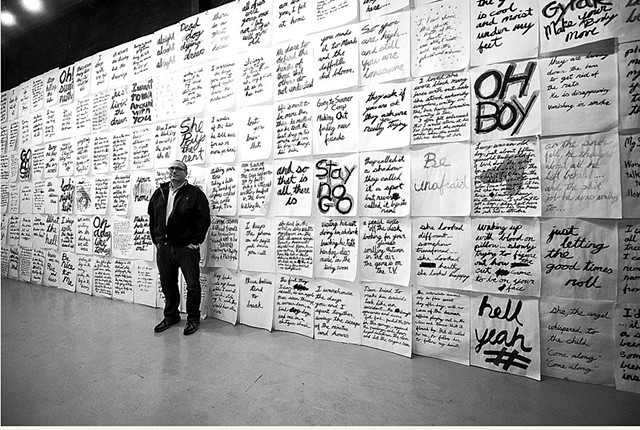Pat Snow came to his art practice after studying and working alongside Robert Colescott and the Reverend Howard Finster where he was introduced to the use of humor and narrative in art. When Snow combined his outsider art interest with the figurative comical paintings of Colescott he found that artists like Johnathon Borofsky and Raymond Pettibone were using similar sources for references and coming to like minded results. Snow has continued to focus on drawing as his medium to express his concerns and desires.
Pat Snow uses the cliche and the vernacular of the storyteller to further his art practice,continuously rearranging the visual and the stories he encounters to critique and explore narrative. The text he uses in his art is influence by William Faulkner, William S. Burroughs and Richard Pryor. He gathers the raw materials for his art from the personal, popular media, bad jokes and art history and reconditions them through his own thoughts and feelings. Images and stories that are well crafted exist alongside crude drawings and fragments of prose to create a larger personal narrative. He then lets this narrative flow, allowing one image to slip to another, creating possibilities and a rich, open-ended story. It’s an art of curating, orchestrating, manipulating in an effort to make visual the inner monologue.
Speaking in the first person, Snow invokes real-life stories and offers his own opinions about the people and events within them. Fragments from the personal and art historical references become equal elements in his narratives. As all narratives are related to memory and personal history the inclusion of imagery from different times and contexts in many of his works open up non-linear sequences of reading and invite viewers' to experience his memories first hand. In this strategy Pat Snow questions how one remembers and constructs a personal history and eventually testing how reliable and trustworthy ones memories are.
